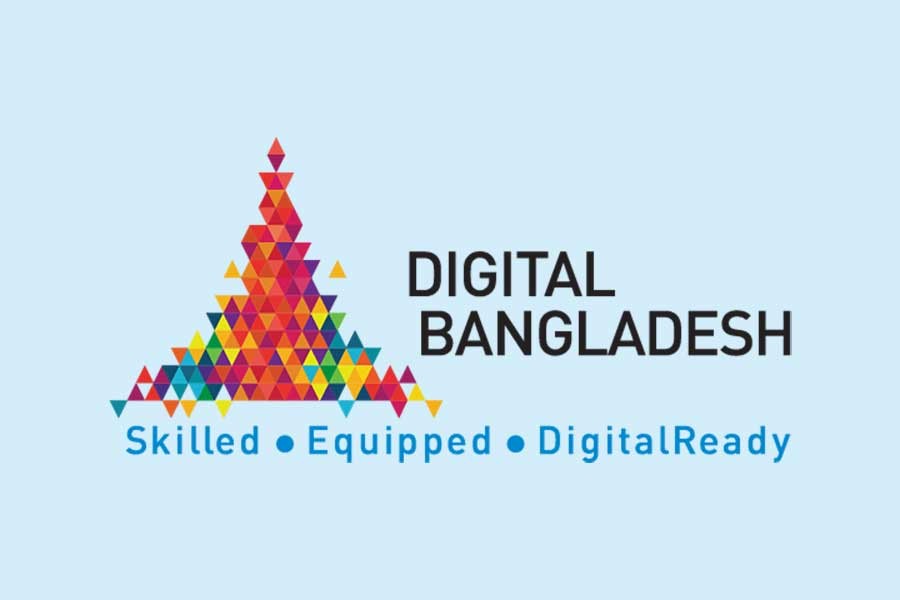More than a decade ago, Bangladesh pledged to transform itself into a technologically advanced nation by 2021, the 50th anniversary of the nation's founding.
Not many people believed we could do it.
After all, when Prime Minister Sheikh Hasina – the project's chief champion – took office in 2009, only 20 million Bangladeshis had mobile phones. But now more than 120 million Bangladeshis do, and millions more have access to high-speed connections even in remote villages. Countless lives have been improved and saved as a result.
The ambitious Digital Bangladesh plan, launched in 2009, was designed to convert plodding, paper-based government services into easy-to-use internet and smartphone-based programmes. E-signatures and electronic filing were widely rolled out and encouraged.
It worked. The government created a network of 8,500 Digital Centres that now provide online services literally from cradle to grave. They help register births, locate jobs and provide online access to health care. Many national programmes were put online. There was almost no interruption in government services when the coronavirus forced lockdowns last year.
Courts continued to operate with the aid of a new judiciary portal. Farmers were able to get crucial weather updates and other data through an agricultural portal. Average citizens were kept informed about COVID-19 through now-pervasive mobile devices.
Bangladesh boasts one of the largest government portals in the world–an internet link to almost every government service. The country's goal is to place 85 per cent of services at citizens' fingertips (through smartphones) and 10 per cent at their doorsteps, leaving only 5 per cent that would require visits to government offices.
So many programmes have been connected online that doing almost anything with the government–from getting a passport to applying for a driver's license–has been dramatically streamlined.
Mobile phones are a key to this success story. Bangladesh now has a toll-free national emergency helpline, 999, which citizens use to report accidents, crime, including cybercrime, violence against women, fires and medical emergencies. The national help desk responds to 60 calls every minute.
Thanks to the allied national digital health strategy, telemedicine is not only possible but commonplace, especially in underserved rural areas. Its programmes disseminate basic health information, which has led to a healthier population. In addition, the government has become more accountable and responsive. The online grievance redress system allows Bangladeshis to easily submit online complaints about public services or products.
Broad connectivity also has helped the economy and created jobs. Training programmes were put in place to develop a skilled, digital-ready workforce. Bangladesh retooled its entire educational system for the purpose and now graduates 500,000 workers annually. Last year alone, more than 65,000 information technology professionals were among the cohort.
The Digital Centres are themselves job generators. At least one in three positions in each centre is designated to a woman.
With roughly two thirds of its population under 25, Bangladesh is fertile ground for cyber workers. Young people are jumping at the opportunity. In years past, most of them could not even imagine a life beyond their family farms. Today, young Bangladeshis are increasingly urban, mobile and ready to enter the new economy.
Bangladesh is reaping significant benefits from digitisation. Since the inception of Digital Bangladesh, more than 1.3 million tech professionals have made Bangladesh their home. So have over 10,000 tech entrepreneurs. All together, they now bring in more than $1 billion annually in foreign earnings from information technology services. Put another way, Bangladeshis have saved 2 billion hours, $8 billion and 1 billion visits to government facilities since Digital Bangladesh began.
Bangladesh is literally shooting for the stars. It launched its first communications satellite, Bangabandhu-1, in 2018. The satellite boosted our economy by providing an array of telecommunications services.
What a ride it has been!
In 2008, Bangladesh's annual growth rate of Gross Domestic Product hovered around 5 per cent. Today, it tops 8 per cent. Readily available high-speed connections are largely responsible for the increase.
Bangladesh has achieved many things under Prime Minister Hasina. But few of them are more remarkable than the country's dramatic move into the internet age. We're even exporting our digital expertise.
Bangladeshi trainers are helping spread digitalisation to our Asian neighbors in the Maldives, Bhutan and Sri Lanka.
No one would have thought that would be possible a mere decade ago.
Sajeeb Wazed Joy is Bangladesh's chief information and communication technology adviser. He is the son of Prime Minister Sheikh Hasina. This article was first published on www.newsweek.com on March 2, 2021.


